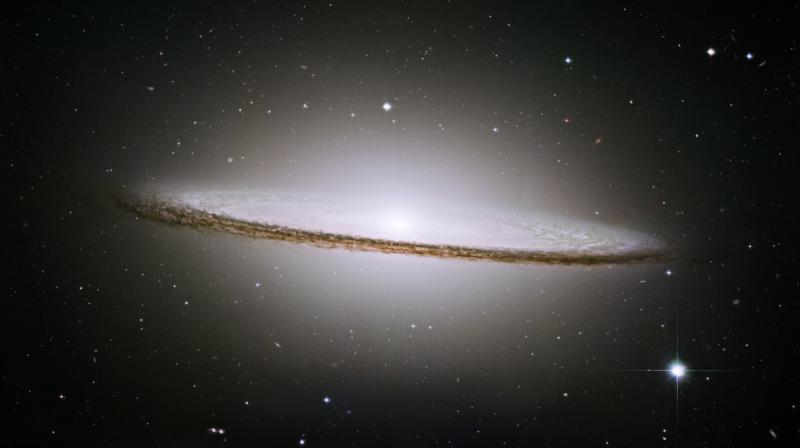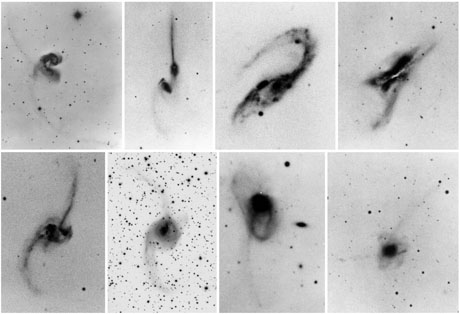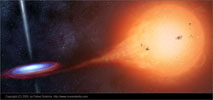
Center for Astrophysics Research
University of Hertforshire
| Home |
| Research |
| Publications |
| Personal |
| Links |
| Contact |
| Research |
Galaxy Mergers and Interactions It is widely believed that most galaxies that exist today have been shaped by an interaction or merger with another galaxy in their past. It has also been suggested that some elliptical galaxies are the product of such a merger between two spiral galaxies; referred to as a wet merger. This was first suggested by Alar Toomre, who identified a collection of nearby spiral galaxies and arranged them in a chronological merging sequence (a partial montage of these galaxies is provided below). In these optical images the tidal tails, formed when the two galaxies pass each other, can be clearly seen. Through studying interacting galaxies at different stages of merging the process of their evolution can be understood. Chandra observations of these active star-forming galaxies have revealed that the largest X-ray population arises from high-mass X-ray binaries (some of which are ULXs). These system contain a massive, short-lived donor star which accretes onto a compact object such as a neutron star or black hole. Due to the relatively short lifetime of these objects they provide a tracer of the star-formation within the galaxy. Also from these X-ray observations it has been seen that the amount of hot X-ray emitting gas increases in these systems until the build up leads to a superwind breaking out of the galactic disc. By studying the mid-infrared emission of a large sample of galaxies undergoing interactions, using the Spitzer Space Telescope, the distribution of star-formation in these systems can be traced. These levels and distribution of enhanced emission can then be compared to interaction parameters (e.g. mass ratio and gas content of the progenitors), therefore allowing us to understand how and when star-formation is triggered. In addition to this we can also probe the link between galaxy interactions and induced AGN activity. Post-Merger Galaxies Even though it has been predicted that the merger of two spiral galaxies leads to the creation of an elliptical galaxy, once nuclear coalescence (the time when the two nuclei from the galaxies have merged) has taken place in these systems the properties of the galaxy are very different to those seen in mature ellipticals. By performing stellar population modelling with the spectra of these galaxies, the time since the last wide-spread episode of star-formation has taken place (and hence the time of nuclear coalescence) can be determined. Then from X-ray observations of these galaxies the amount of hot gas they contain can be determined, and the X-ray binary population can be characterised. From hydrodynamical simulations it has been predicted that as these post-merger galaxies age, the amount of hot gas that they contain will increase and they will begin to resemble older elliptical galaxies. ROSAT and Chandra observations have also hinted at this halo regeneration and through new X-ray observations we are currently investigating if these post-merger galaxies are truly infant ellipticals. Populations of X-ray Sources Within Elliptical Galaxies: An ongoing debate concerns the formation of these objects where the question is asked, do field LMXBs form in the field, or are they actually formed with globular clusters? This second scenario has received a great deal of attention over the last few years due the revelation from Chandra observations that such a large percentage of LMXBs reside in globular clusters. In fact, as a consequence of these observations it has been proposed that all LMXBs form within globular clusters, with those that are found in the field being either ejected through supernovae kicks, or the globular cluster that they were born in has evaporated. Through Chandra and HST observations of elliptical galaxies we can investigate this hypothesis by identifying LMXBs, and establish which of these reside within globular clusters. Through this work we can investigate if the properties of LMXBs that are found within globular clusters differ to those found in the field and so tackle the issue of LMXB formation, where these observational properties can provide constraints to models of binary formation. Further, through multi-epoch observations, the temporal behaviour of LMXBs can be used to identify the population of transient binaries in elliptical galaxies, which are predicted to be sources formed within the field environment.
|

